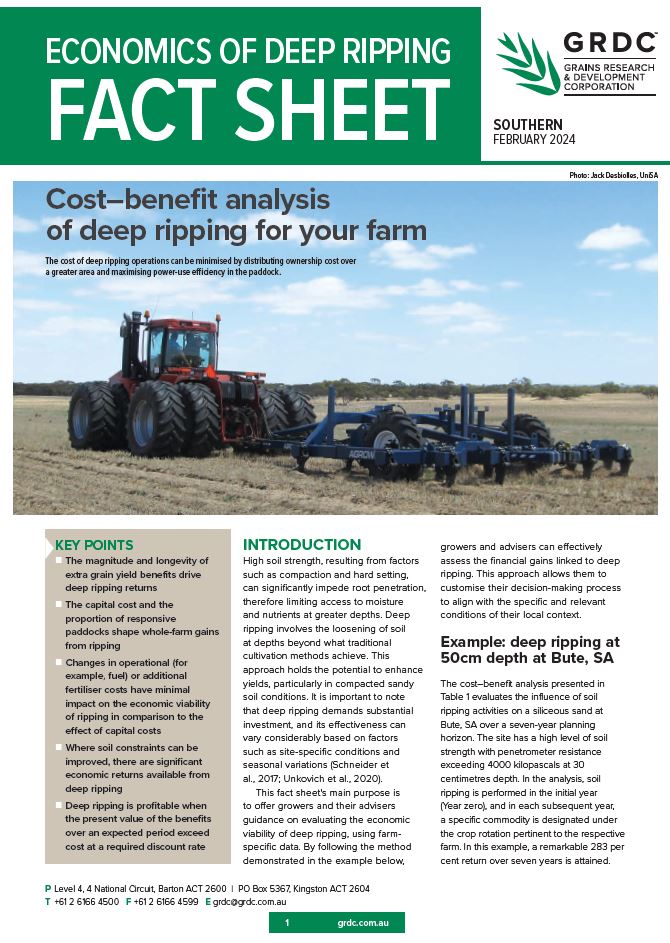Economics of deep ripping
Economics of deep ripping
Published: 1 Mar 2024
Hard soils make it difficult for plants to access moisture and nutrients deep in the ground. Deep ripping breaks up soil layers that regular farming can't reach. This method boosts yields, especially in compacted sandy soil. However, it's costly. Success often hinges on weather and seasonal conditions.
This fact sheet helps growers decide if this method is right for them. It uses data from their farms. Additionally, it offers ways to tailor deep ripping decisions to local conditions.
Key points
- Extra grain yield benefits drive deep ripping returns.
- The capital cost and the number of paddocks that benefit from deep ripping shape the whole-farm gains.
- Changes in operational (for example, fuel) or additional fertiliser costs have minimal impact on the economic viability of ripping in comparison to the effect of capital costs.
- Where soil condition can be improved, there are significant economic returns available from deep ripping.
Want a hard copy?
GRDC produces a range of publications to share the RD&E knowledge generated from our investments with grain growers and the broader industry.
Printed publications
Printed copies of some publications are available for growers, advisers and farming systems groups, for personal use and distribution at GRDC events.
Contact GroundCover Direct on 1800 11 00 44 or email ground-cover-direct@canprint.com.au to request copies. Publications are free but postage and handling costs may apply.
Download PDF
Region: South
GRDC Project Code: CSP1606-008RMX,

